With one of the largest countries in the world and the lowest population densities, Australians have always loved their cars and have been affluent enough to be importing the very best examples since motoring began.
That was very obvious at this year's Motorclassica event held over the last three days in the Melbourne Exhibition Buildings and the strength and number of exhibits on offer compares well with the Paris Retromobile show which is also held in an equally appropriate and historic setting.
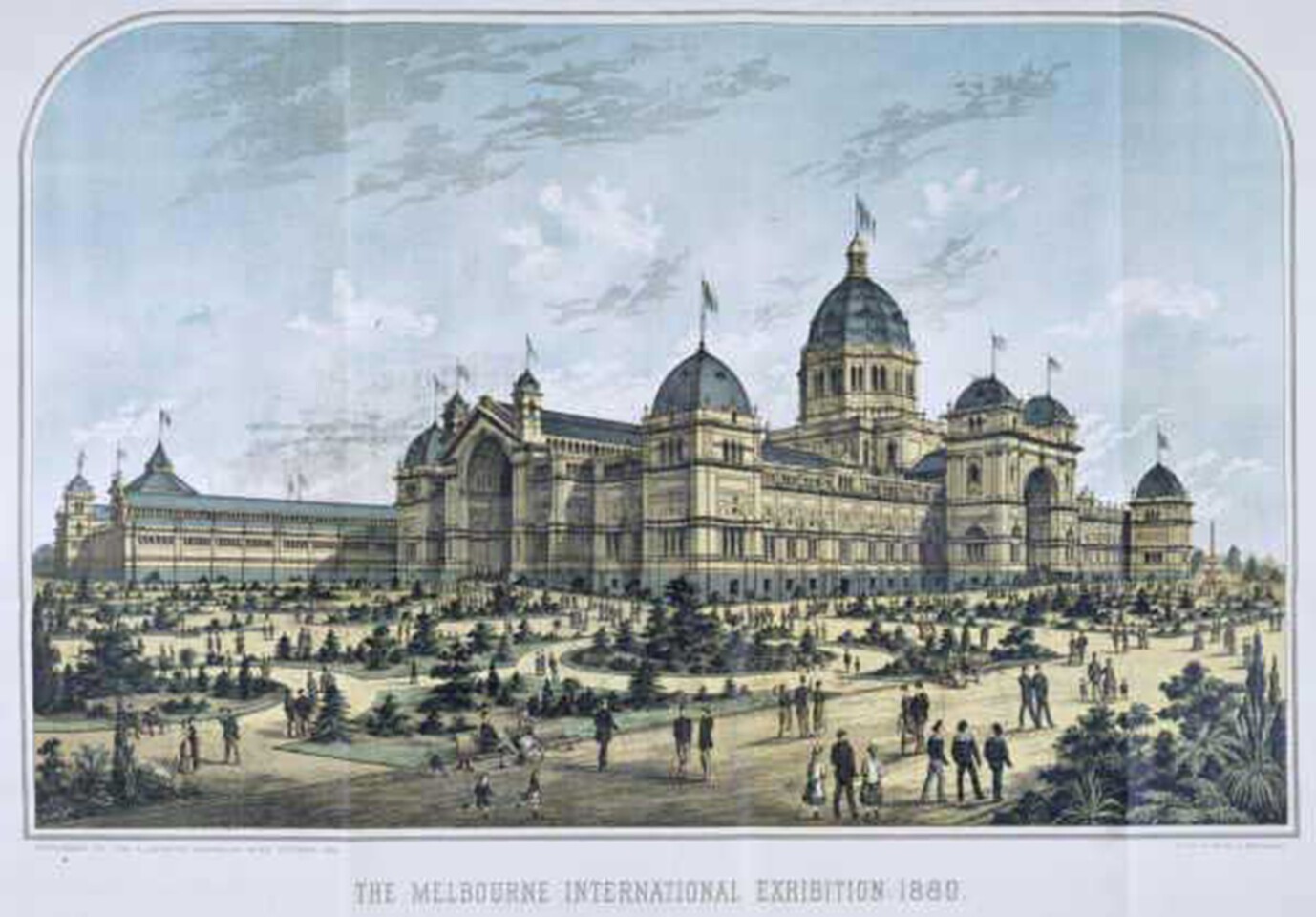
Built in 1880, the Melbourne Exhibition Building is the oldest surviving building to have housed a world fair.

Though it has been restored to just a fraction of it's original floor space, the central structure is still there and it's quite some structure that predated all of the cars which it contained during the show. That's an example of the first production automobile below - The Benz & Cie Velo, this one produced in 1896. The building was built 16 years prior.

From the polished wood floors to the intricate internal structures, and on such a grand scale, it offers a glorious backdrop to frame the cars which it contained during this show.


Steve McQueen's values were on display at the show because this is an audience that really appreciates authenticity. Indeed, authenticity is the overwhelming brand value of the entire classic movement.

World class shows offer almost anything you could want if you are a functional petrolhead. If you want your ride immortalised, you'll find someone who can do the business by hand

... or digitally,
The stage

Steve McQueen's son Chad was one of the continuously running stage events at the show and he went on stage several times a day and chatted to the audience and reminisced about his dad. He told the story many times of how he did a lap of the 13 km Le Mans race circuit in a race car sitting in his dad's lap during the filming of the epic race film, "Le Mans". Steve would be crucified in the media for child abuse these days, but that was then.
The whole stage aspect of the show is worthy of further development methinks. The storytelling was magical and there's great potnetial in this medium at shows with the array of wonderful motorsport personalities readily available. If there's one aspect in which Melbourne wins hands-down over Essen and Paris, it's that the majority of the conversations and conferences in those events are conducted in German and French, whereas here, I understood every word and every nuance too.

The stage show also included the first Flying Finn, Rauno Aaltonen best known for his success in rallying, but very capable on the tarmac, which he demonstrated convincingly in 1966 when he drove in Australia's most famous road race at Bathurst. Learning the mountain circuit normally requires a few Bathurst endurance races to know it well enough to run at race pace all day, but it proved no problem for the rally champion and he won it at his first attempt.
Women too
One of the interesting contrasts to European shows is the far greater participation of women in Australia. In Australia, not only do women make up a greater percentage of the crowd, but a greater percentage staff the displays and interact with the clientele too.
There was a complete absence of the "prettys" you'll see at any other car show in the southern hemisphere, but an infinitely greater number of women who didn't bother with high heels because they really knew what they were talking about .
I love photographing these events because everyone is so courteous and friendly. Every time I saw one of those "do not touch" signs I almost laughed, because you could never get a more respectful audience than this one. Indeed, as you wander from car to car, striking up a conversation is so natural that the whole show felt like a series of wonderful conversations with interesting articulate people about a shared passion.
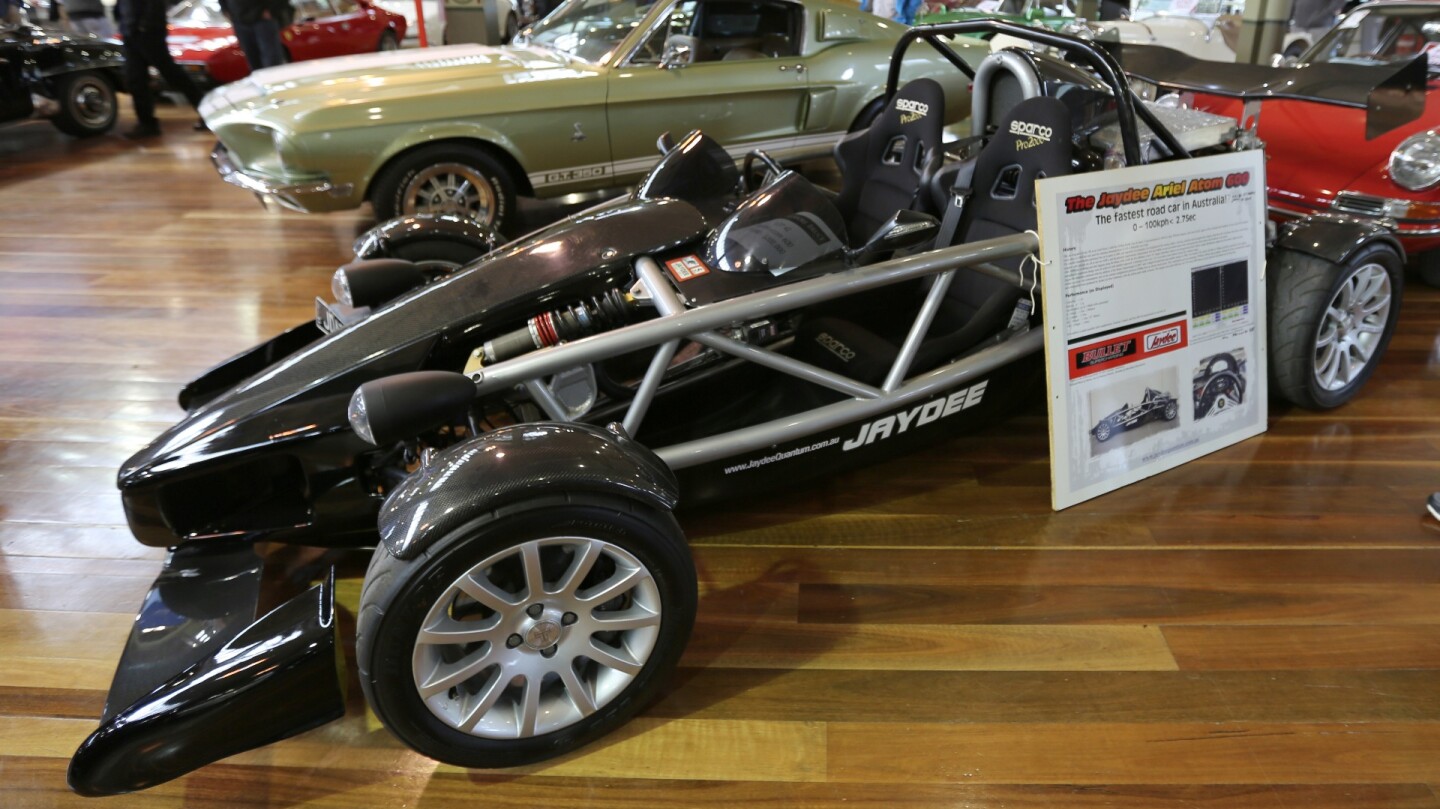
Like the interaction that unfolded after this car had stopped me. It's billed as Australia's fastest road car and it's not really, but we'll get to that.
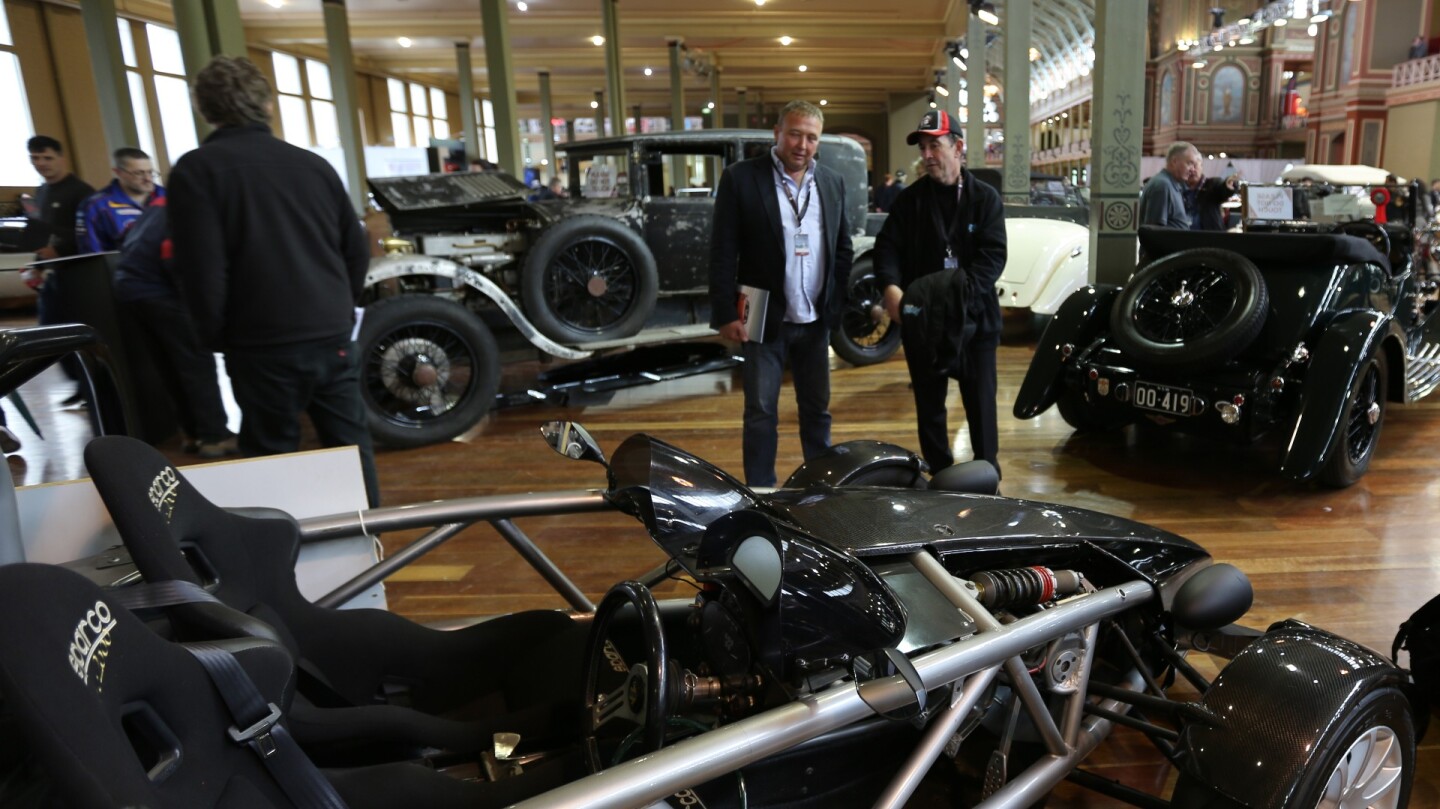
The great thing about shows like these is that the owner is never far away, and you can meet some really interesting people. That turned out to be him in the black and red hat.

It's been Jeff David's personal car for the last few years and the motor produces considerably more power than it ever did as a common garden variety Ariel Atom.
Jeff is not your ordinary car enthusiast, partly because he's a bike guy too, and an engineer who does stuff like supercharging one-off engines, aftermarket ECU conversions, traction control installations, data logging and analysis, dynotuning, shock re-valving ad infinitum ... all in-house, including the manufacture of custom internal engine components and carbon fibre anything. After several hours with Jeff, I'd classify him more as an applied research scientist than an engineer.
And he's extra good with suspension. In one of my previous lifetimes as a motorcycle magazine editor, I knew of JayDee's legendary expertise in re-valving suspension to make competition motorcycles handle like a dream. A lot of very fast riders swear by his expertise in making bikes behave with poise at ballistic speeds. Anyway, all the work he did with suspension on enduro and motocross bikes has enabled him to develop automotive suspension that offers equal suppleness, yet keep the rubber planted on all four corners in a car.
"I wanted to build a car that handled well on the real roads out there, not just a billiard table smooth racetrack", said Jeff. "I wanted a car with the speed of an R1 Yamaha sports bike, but with four wheels on the ground and all the electronics to make it easy to drive really fast." So he started with an Ariel Atom and got to work. The full development is extraordinary and we'll have the full story in the next day or two, but here's the short version.
There's almost nothing on the car that hasn't been modified, strengthened, re-engineered and improved. Bought producing 245 hp, the motor still wears a Honda badge, but the seriously transformed Jaydee Atom 600 produces an amazing 594 hp on E85 pump fuel.
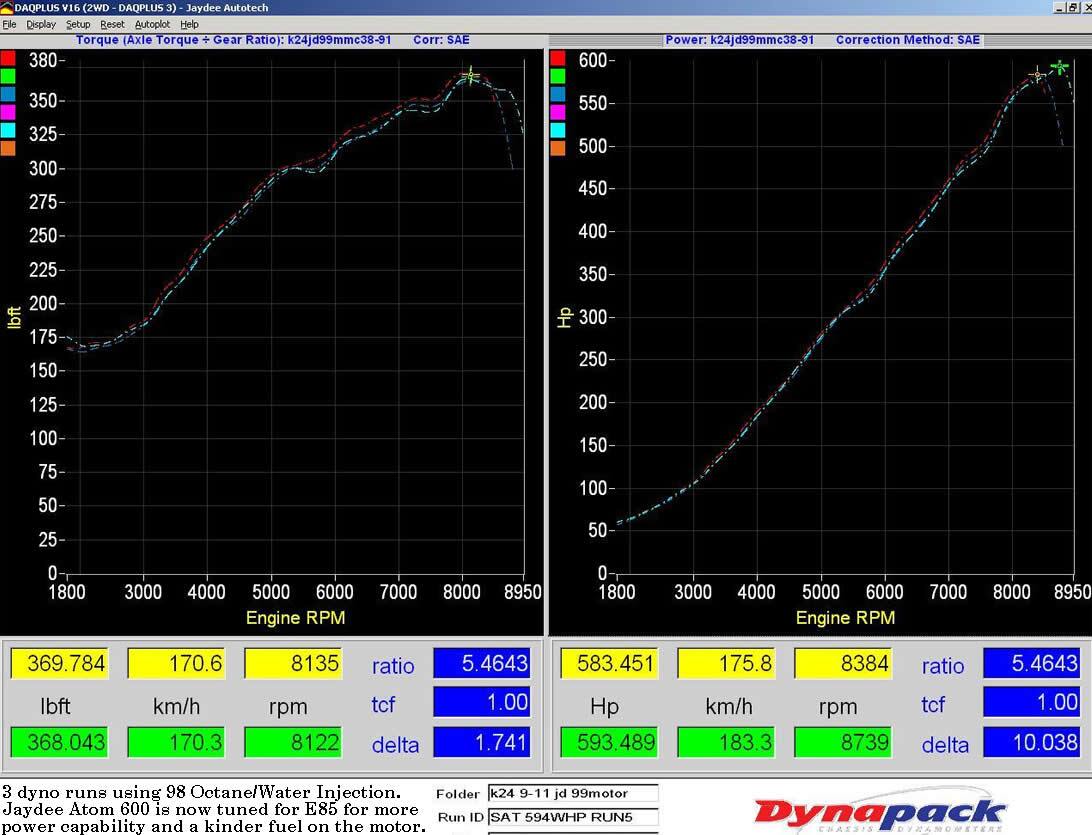
With that much horsepower, in a car as light as this one, it goes like a bat out of hell ...
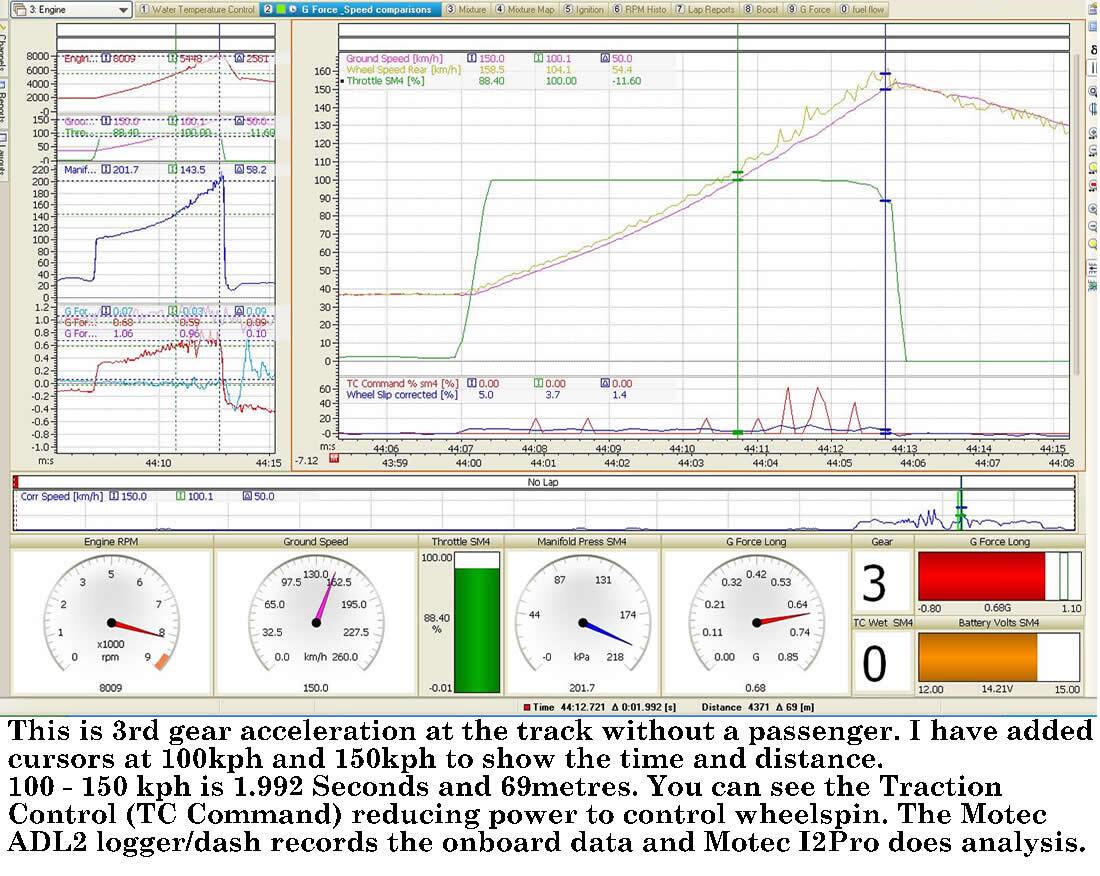
The car runs zero to 100 kmh in 2.7 seconds.
But the real story is in the handling and suspension ... and the reason he's selling it.
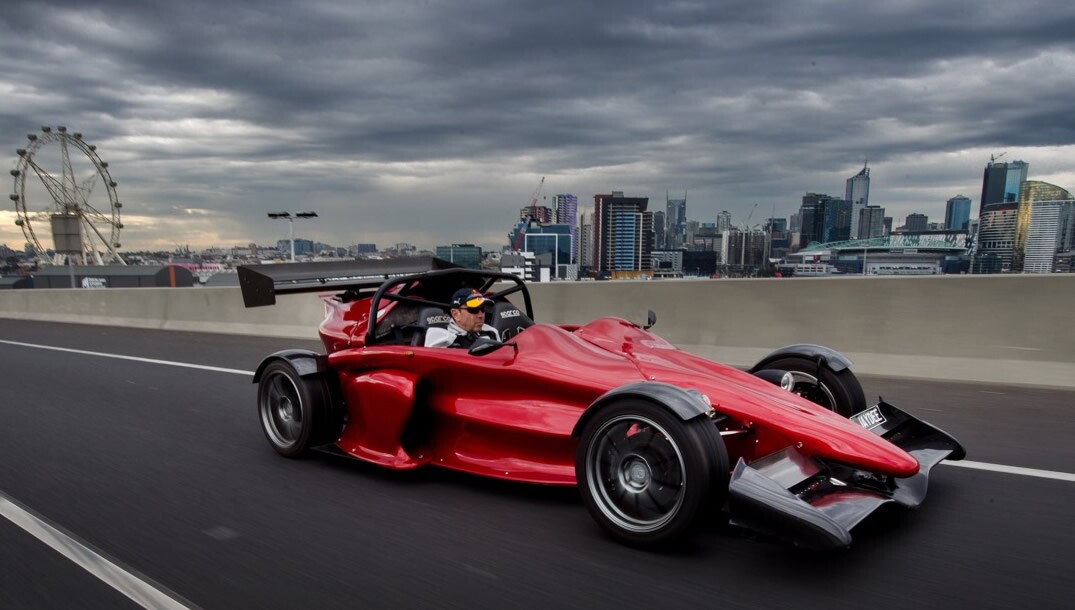
It's because JayDee has new personal wheels. He built it himself. It weighs 700 kg at the curb and produces 700 hp but it's not the power to weight that distinguishes the car: it's the handling. "I wanted to start with a clean sheet", said Jeff. More soon on this one too. Hence, Jaydee's old car is for sale.
The ever-changing classic car marketplace
According to data released last week in the United Kingdom, women are increasingly entering the classic car market. British Classic car insurance broker Footman James, found one in four women would now consider buying a classic car, "showing the classic car club is no longer reserved for the stereotypical middle-aged man."
Over the past two years in the UK, the number of female classic car owners has risen by 40 percent, with female customers expected to account for 11 percent of the marketplace by the end of 2016. The average age of a female owner has fallen consistently over the last few years, now standing at 52 years old and the top classic car makes owned by women were Morris, Volkswagen, MG, Mazda and Land Rover.

The above snapshot of opinions versus facts from that research also shows that women might be equally as, if not more astute, as investors. Clearly the times are changing in this industry, and Australia appears to be ahead of this global trend from my observations at this show.

The quality of the cars on show and the supporting industries evident in the Australian marketplace was also world class and a perfect example is this imposing 1930 Rolls-Royce Phantom II rolling chassis. Clare Gordon saw me crawling around this metallurgical masterpiece, offered her assistance, then answered everything I could throw at her.
This is how most cars would have left the factories of Rolls-Royce, Bugatti, Bentley, Hispano Suiza, Alfa Romeo ad infinitum. It's a practice evolving from the "coachbuilding" industry of the previous century which created the horse-drawn carriages of the wealthy.
In the first few decades of the 1900s, very expensive motorcars were built by automotive couturiers in Paris, Berlin, Milan and London. The manufacturer would send the rolling chassis to the body designer/builder so that a body could be built to meet the owner's needs, much as you would work with an architect to create your ideal home.
This car is well documented as having left Rolls-Royce factory in late 1930, and delivered to the Paris-based coach builder Hibbard & Darrin where it was clothed in an aluminum body and delivered to wealthy Romanian industrialist Max Ausnit, whose address was recorded on the invoice as "Ritz Hotel, Paris." The subsequent owner, was J. Bruce Ismay, chairman and managing director of the White Star Line which had built the RMS Titanic. Max Ausnit took delivery of the car in May 1932, The Ismay's took delivery of the car in May 1935 but as the person who ran the company that owned the famous ship, he became very reclusive in later years and no pictures of the original body have survived.

Rather than produce a body that wasn't entirely authentic, it was decided to restore the magnificent Phantom II to the exact state that it left the Rolls-Royce factory in Derby. There are many more pics in the image library for this story and it stands as the ultimate testimony to the quality of Paradise Garage's restoration work. Matching the quality and diversity of work carried out by Rolls-Royce at its peak is no mean feat.
Until such time as information emerges as to what this car looked like, the owners are in no hurry to force the issue because like a motorcycle, the interesting bits are visible, and when they are all of such exquisite quality and combine to form something the size of a bus, you could stare at this objet d'art for days. For more info visit Paradise Garage or watch the video above.
There are too many stories to tell associated with this show and we'll be covering a few of the cars as separate stories over the coming week, but we've attempted to cover everything in the image gallery.

Ducati - inspired by Marconi
You'll note that Ducati is celebrating its 90th year in business in 2016, yet it's first motorcycle was not produced until 1946. That's it above, a clip-on engine for a bicycle known as the Cucciolo or Puppy. From little acorns ...
Prior to 1946, Ducati was an electronics company producing a wide range of radios and other electronic machinery and grew to become the second largest company in all of Italy prior to WW2.
Though the factory in Borgo Panigale is now known for it's v-twins, it originally produced the first consumer electronics and the Ducati brothers all lived and worked in Bologna, which at that time was the electronics capital of the world as it was the home town of the inventor of radio, Guglielmo Marconi.

This beautiful Ducati radio is an example of Ducati products prior to the company's motorcycle renaissance.

At the rear of this display case is a Ducati Duofone intercom system which was the height of office communication pre war.
Best in Show
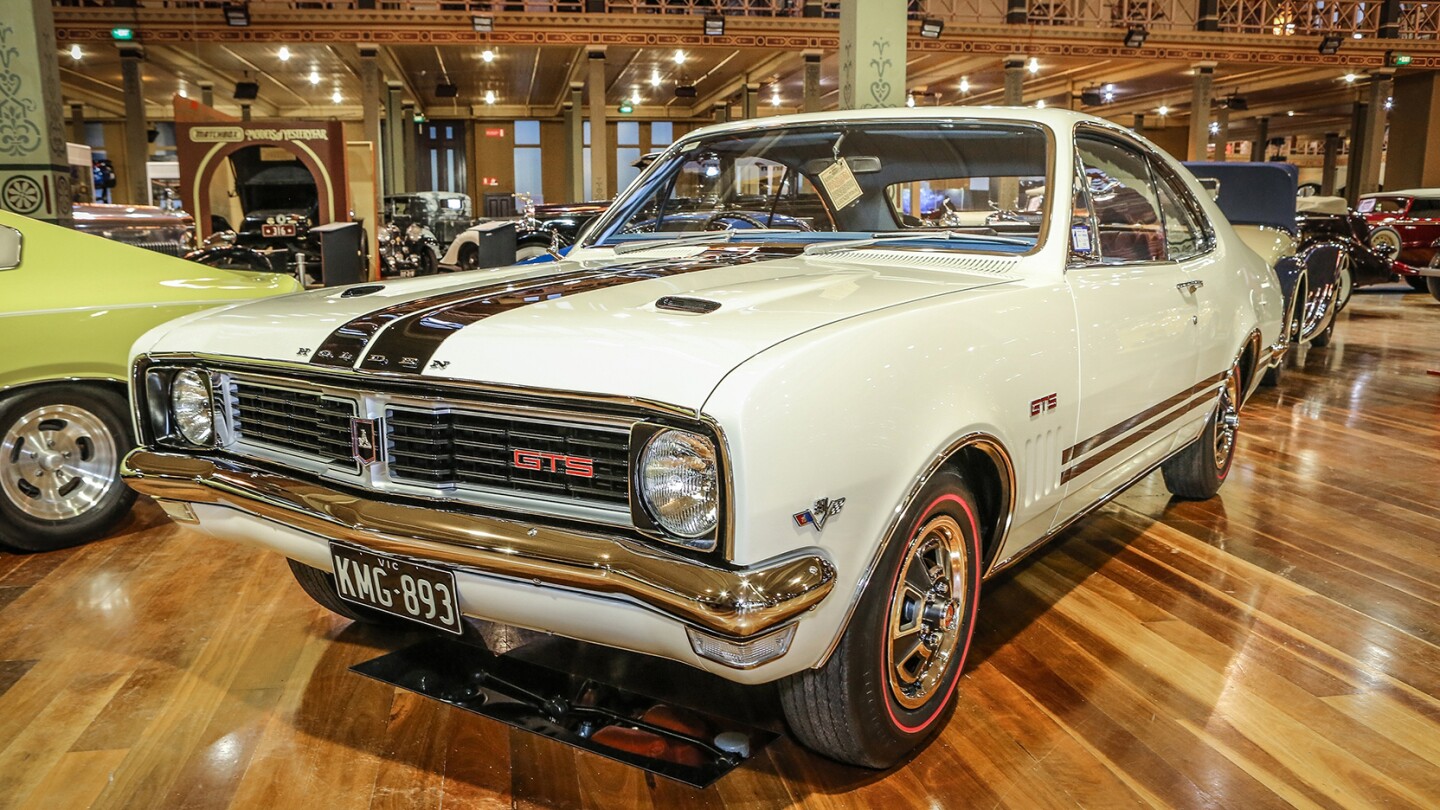
One final exhibit which must be mentioned is the car which won the International Concours d'Elegance at Motorclassica this year. It's an Australian made, owned and restored Holden Monaro GTS, one of the muscle cars which dominated Australian production racing in the 1970s.
It is the first time that an Australian-made car has won a globally-recognized Concours d'Elegance event, and the first locally manufactured winner in the seven year history of the Motorclassica event.The fabulous 1969 Holden Monaro GTS won Motorclassica's "Best of Show" accolade to win the premier Australian International Concours d'Elegance title, along with the "Restoration of the Year" trophy for its restorers, Recreation Automotive.
Smart's recently-restored Monaro GTS scored a perfect 100 points from the hugely-experienced Concours d'Elegance judging panel, which described the restoration as "perfect" and "faultless." The white Monaro GTS beat a field of 85 cars and motorcycles to take the title of "Best in Show."
In conclusion
Melbourne's Motorclassica is now in it's seventh year and is on track to join the tier one classic automobile shows as part of a world circuit for serious enthusiasts. Bold in nature and incredibly well curated and run, the show is world class and will undoubtedly achieve its aims as the classic car marketplace continues to grow in stature.
There's one added bonus that makes the Melbourne show a likely drawcard for visitors. Not only is the Melbourne museum entrance 80 meters away from the Motorclassica entrance, the entire Melbourne central business district is directly accessible by tram, meaning that if your travelling partner wishes to do something else, there's plenty to do.

























































































































![The Ti EDC [everyday carry] Wrench is currently on Kickstarter](https://assets.newatlas.com/dims4/default/0ba225b/2147483647/strip/true/crop/4240x2827+0+3/resize/720x480!/quality/90/?url=http%3A%2F%2Fnewatlas-brightspot.s3.amazonaws.com%2F59%2Fb2%2F6a6fdd0348a8bfdad88bbcefec53%2Fdsc03572.jpeg)